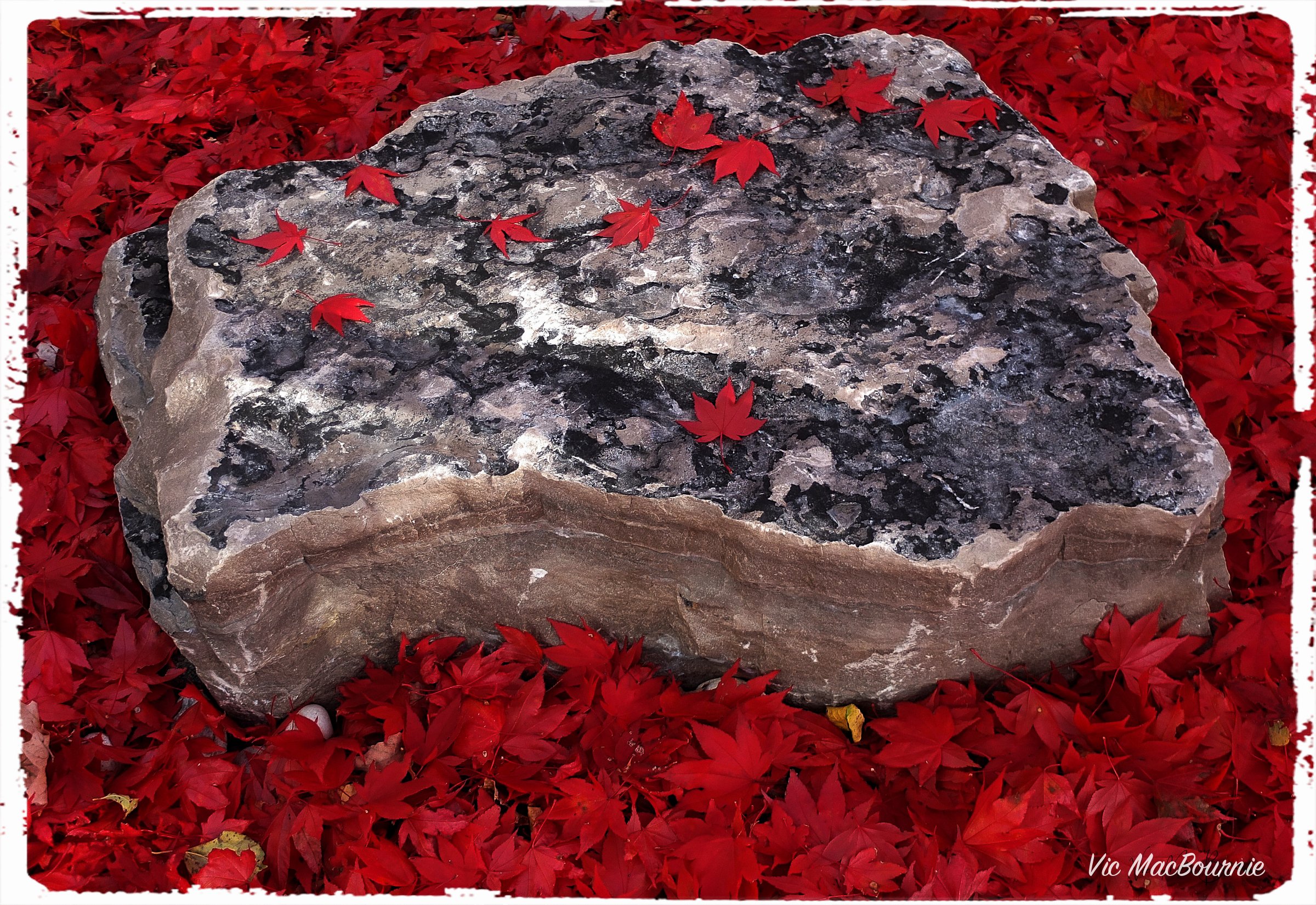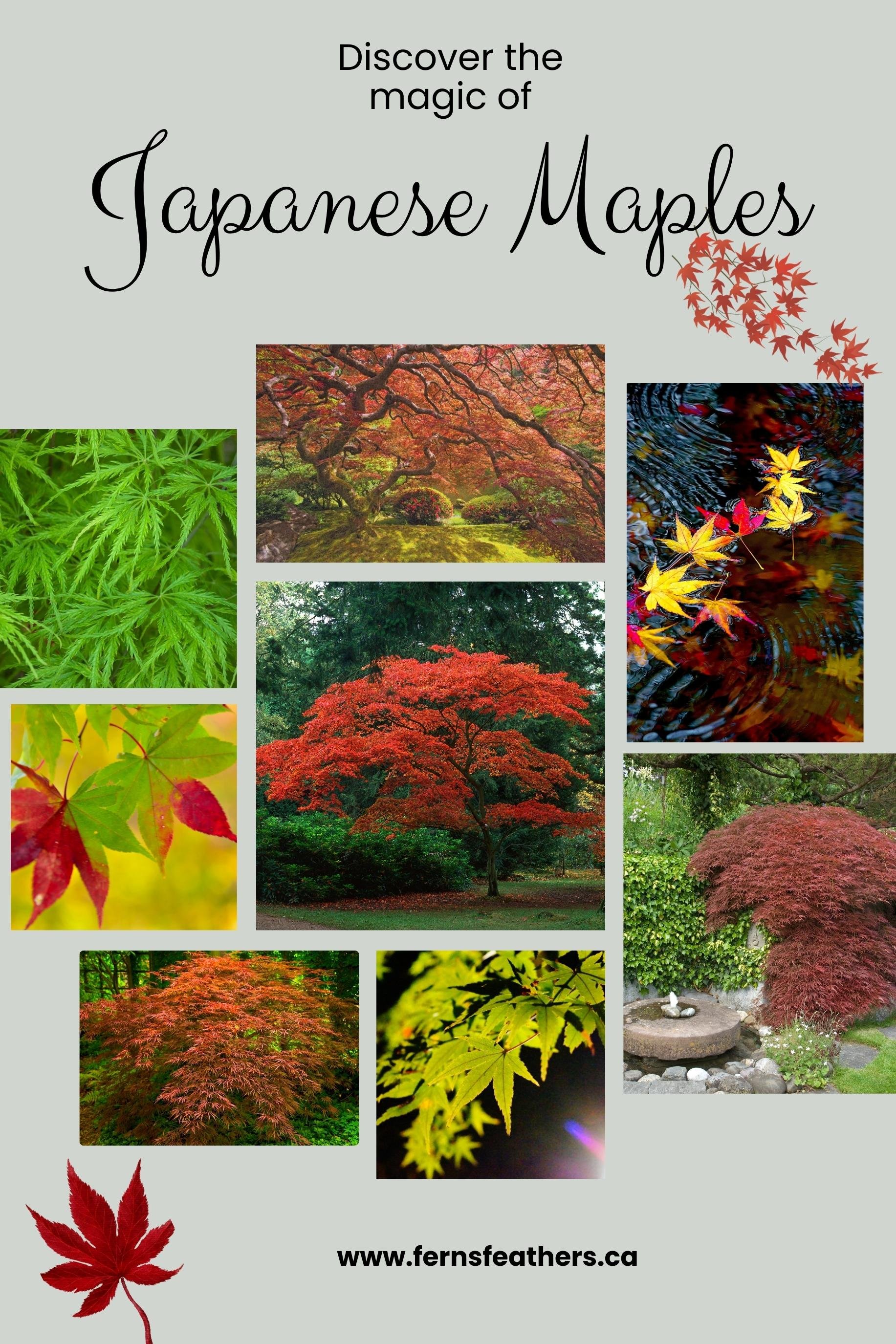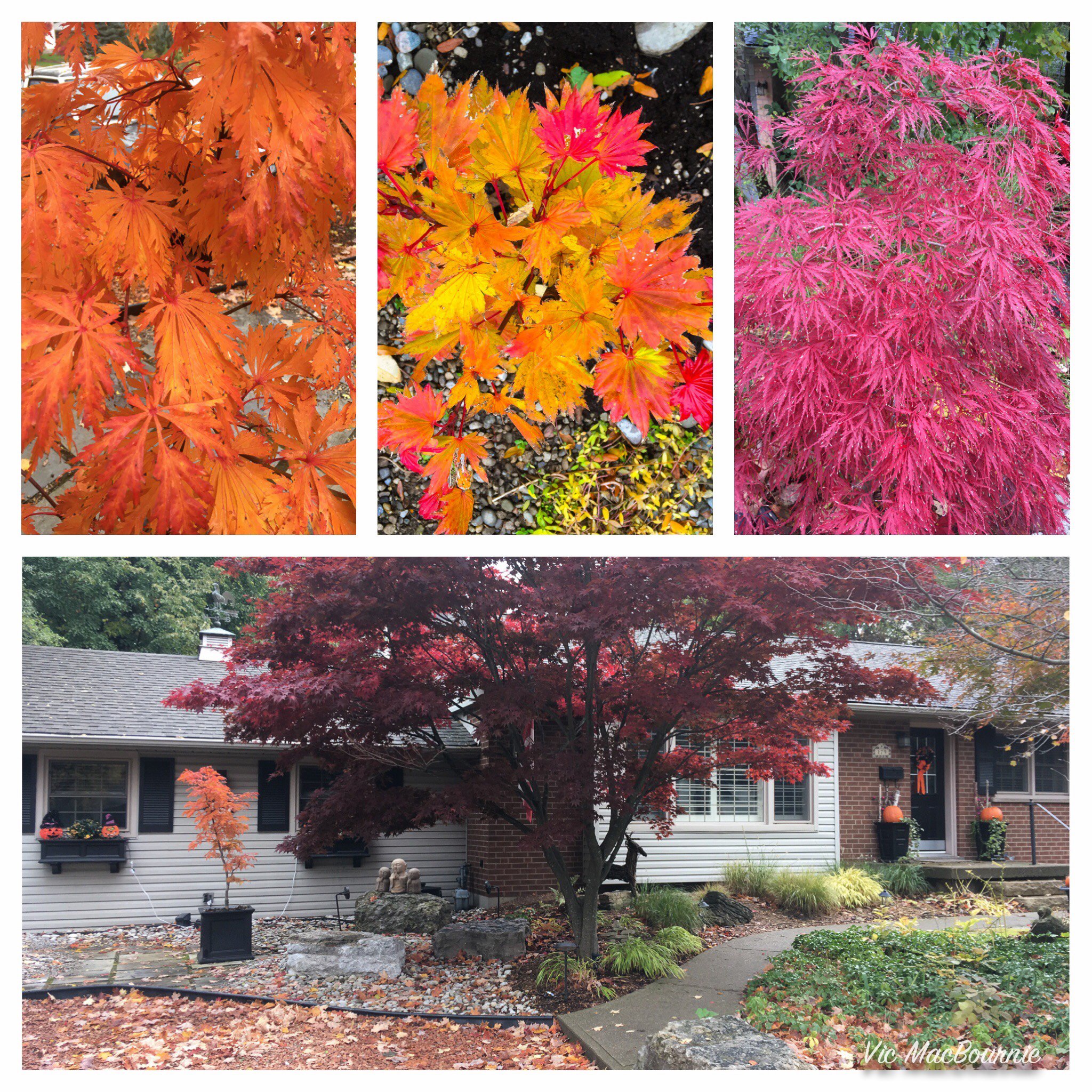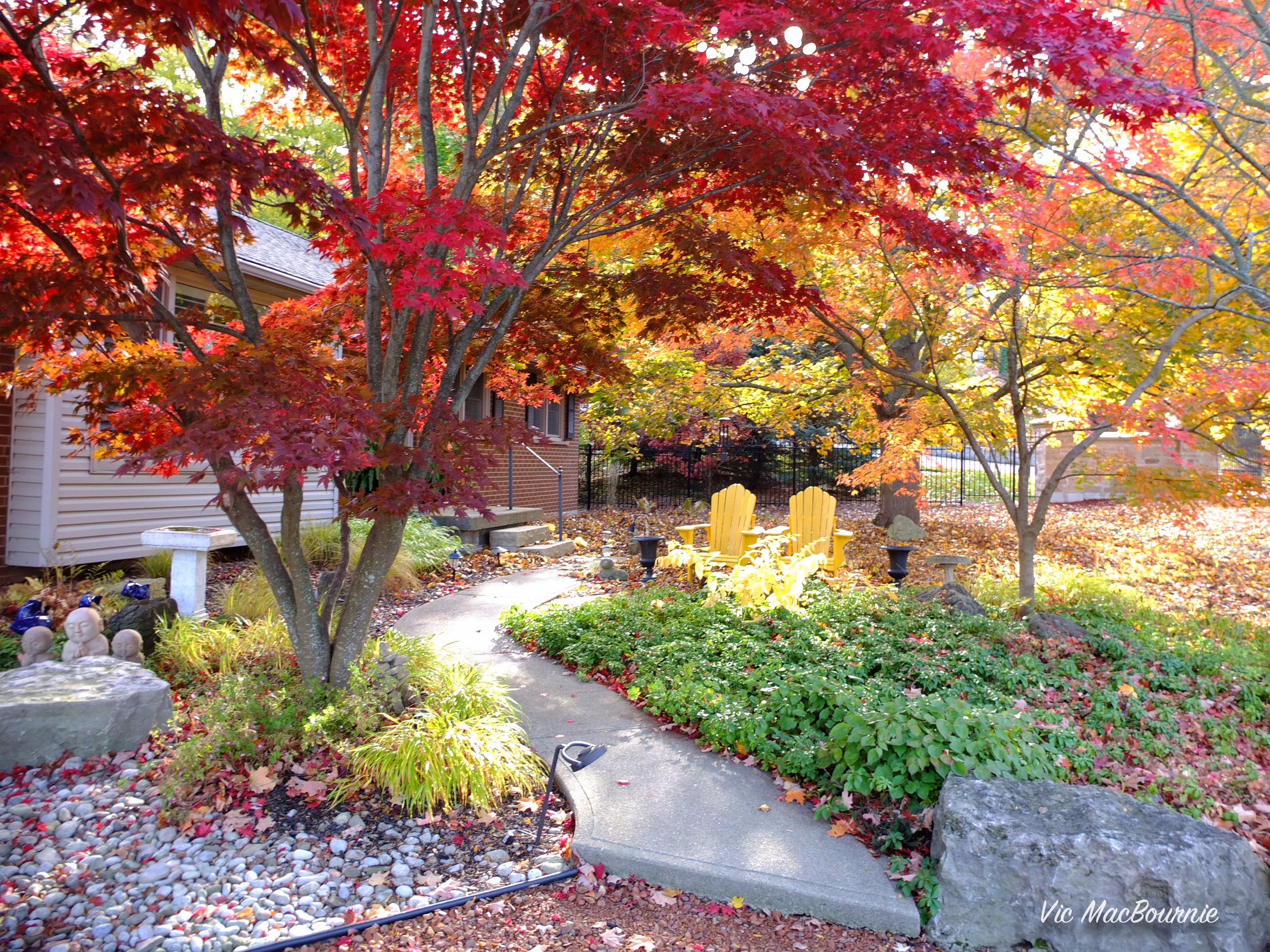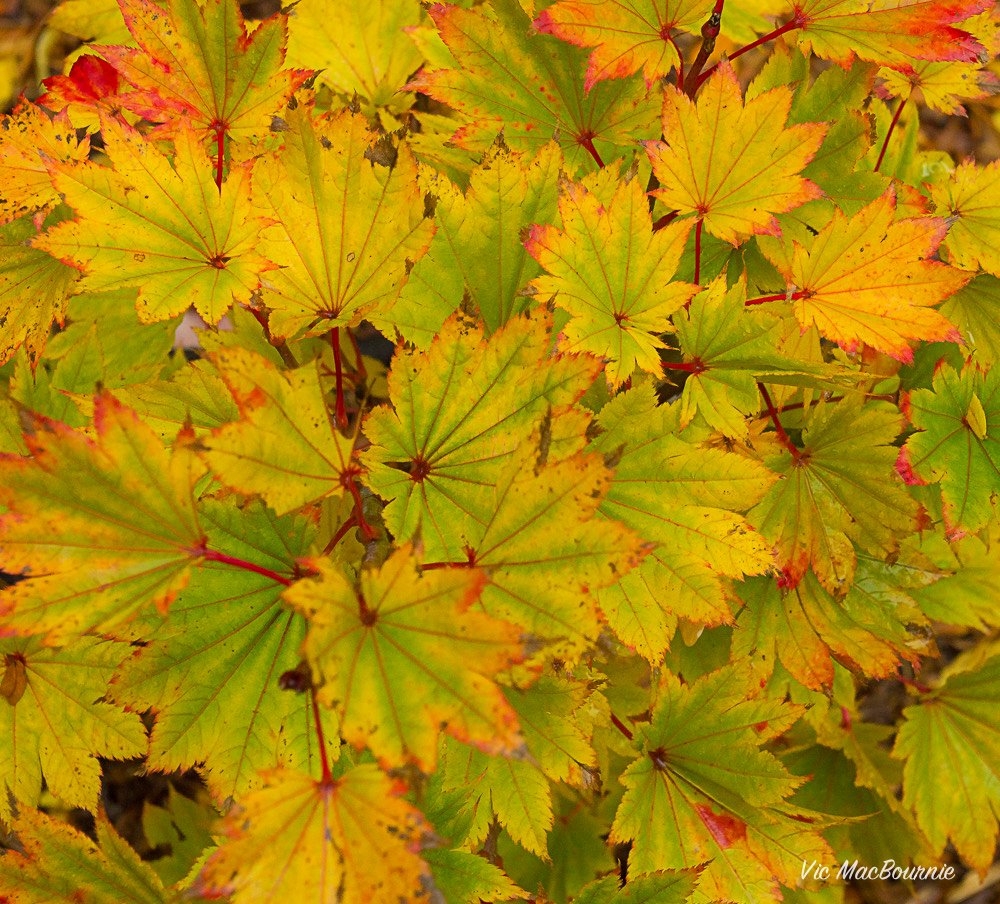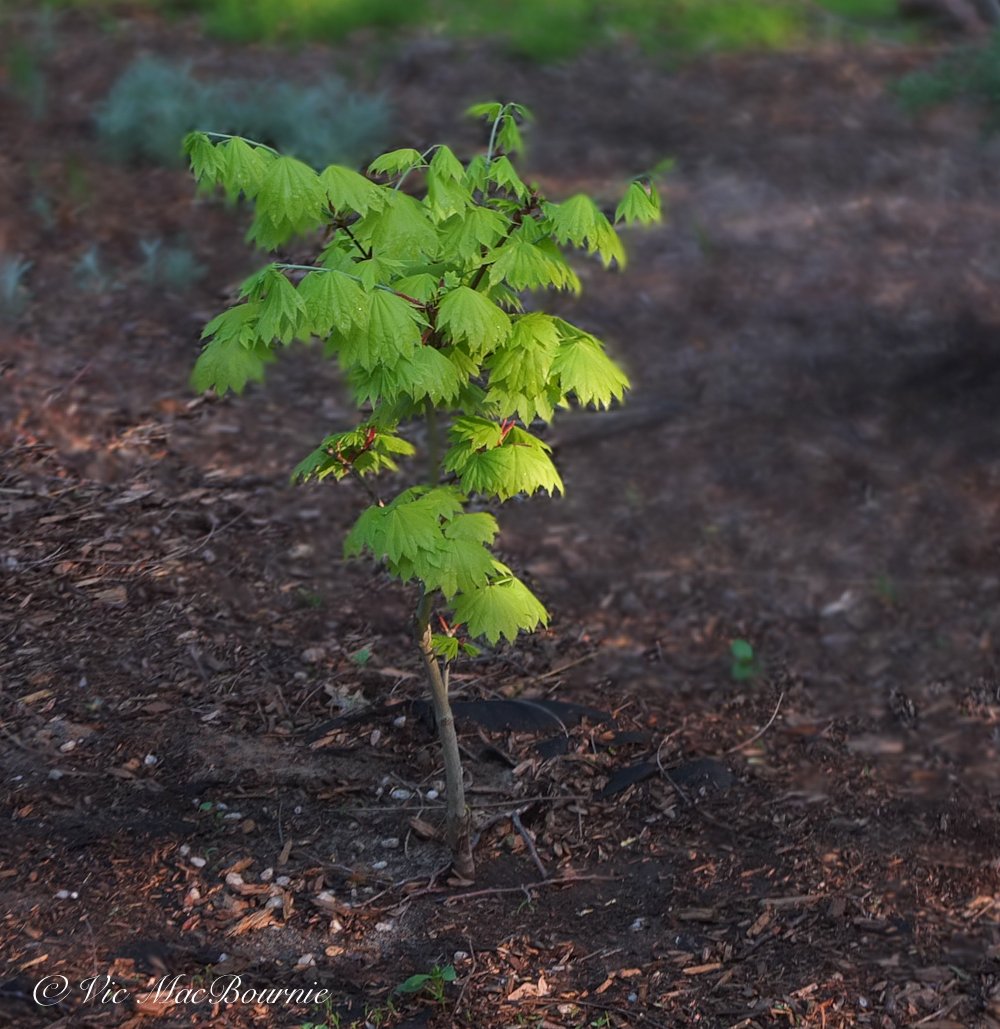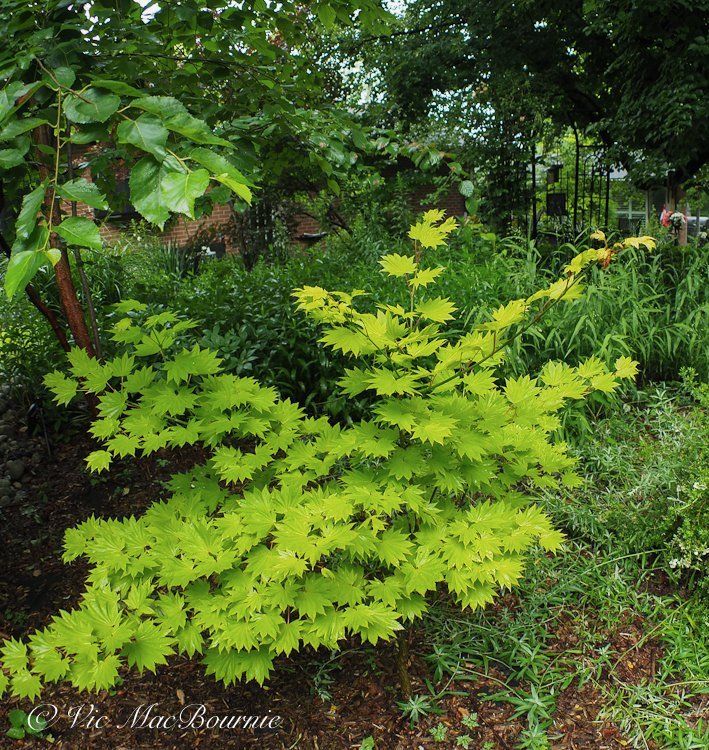Mature Japanese Maple is star of the woodland garden
How to properly grow, prune and plant Japanese Maples
A mature Japanese Maple is truly a spectacular site no matter the season. Their slow growth habit also makes even a mature Japanese Maple the ideal tree for today’s more compact front and back gardens.
Even in maturity, most Japanese Maples will reach only 15-20 feet (4.5 meters) in height. But getting to these lofty heights will take a while considering they will grow on average only about 1-2 feet (about .5 of a meter) per year. These non-native trees are generally hardy in zones 5-8. If planted in a sheltered micro-climate area close to your home, you might be able to stretch it to even lower zones.
That’s why a Japanese Maple (see image below) was the first tree I purchased when we moved into our home more than 25 years ago.
I remember purchasing it on sale for about $25. Today, it’s a large, mature Bloodgood Japanese Maple that takes a prominent spot in our front garden and anchors our Japanese-inspired garden.
Twenty-five dollars and 25 years later, our little Japanese Maple – home to a red-eyed vireo family one year – is now a priceless addition to the front yard and contributes immensely to the curb appeal of our modest home.
Its beauty is evident in its early spring foliage which gives way to a darker red leaf colour through summer changing to an incredible crimson red in fall before the leaves all drop over the course of a day or two and create the most magnificent ground cover for several glorious days. The image above shows the leaves shortly after falling from the tree in fall and creating the most glorious of ground covers.
• For more on using Japanese Maples in the landscape check out my other posts:
•How to Use Japanese Maples in the Landscape
Consider mature size when planting a new Japanese Maple
It’s important to consider the final, mature height and width of these trees when you decide to plant one.
Since there are many different Japanese Maples – all with varying growth habits – it’s important to do your research on the particular variety of tree you have purchased to ensure that you give it room to spread out.
It’s easy to think this tiny tree will stay small all its life and plant it too close to your home or other structures.
Let your Japanese Maples spread their horizontal branches
Although they don’t grow very tall, most Japanese Maple’s, except for the weeping varieties, are meant to be grown in a way that allows their branches to spread out horizontally.
In fact, a properly grown, mature Japanese Maple can have a horizontal spread equal to or even greater than its height.
As Japanese Maple trees mature, they should be treated more like a flowering dogwood trees and allowed to take on their natural shape. These are not trees you want to heavily prune into tight balls or columnar shapes. (There is a columnar variety available if you really have a constrained space.)
Please don’t heavily prune these trees into ridiculous shapes. As they mature, these majestic trees deserve to be allowed to grow the way nature intended.
If you are not sure how to prune these trees, either leave them to grow on their own, or hire a professional tree pruner who specializes in Japanese Maples. Be careful, a lot of tree companies will tell you they can prune the tree only to destroy your tree’s lovely horizontal shape.
I was actually shocked to see one of the top garden websites’ using an image of a Japanese Maple pruned to the point that I’m sure would be a crime in Japan or at least a mortal sin. In all seriousness, just plan to give these trees ample room to spread out and you will be amazed at how beautiful they will become in time.
Japanese Maples for very small or tight areas
Ont of the great things about Japanese Maples is that there is a huge variety available, including ones that never get very large at all.
So, rather than trying to grow a Bloodgood variety in a tiny space, consider one of the slower growing varieties that never get much larger than three or four feet. These include the cutleaf weeping Japanese Maples that can be spectacular in their own right.
However, there are acer palmatum varieties with such a slow growth rate that they will never get too large for a small space.
Acer shirasawanum ‘Aurem’ Golden Full Moon after about 7 years of growth.
In our woodland garden, we have a Acer shirasawanum ‘Aureum’ (Golden Full Moon Maple), with a mature height of about 15 feet. It’s extremely slow growth habit means reaching this height would probably take your lifetime. A lovely mature specimen can be seen here on Kiefer Nursery’s website.
One of the more expensive and surely one of the most beautiful specimens, these are best grown as a true understory tree in the shade of larger trees where they can get ample shade to protect their magnificent golden foliage.
Diseases to watch for in your Japanese Maples
Japanese Maples are relatively healthy trees without any significant diseases. However, like any plant, they can still be susceptible to certain diseases.
One common disease that affects Japanese Maples is powdery mildew. This fungal infection appears as a white, powdery coating on the leaves, causing them to become distorted and eventually drop off. Powdery mildew thrives in humid conditions, so it’s important to ensure good air circulation around the tree and avoid overhead watering.
Verticillium wilt can be deadly for Japanese Maples
Another disease that can affect Japanese Maples is verticillium wilt. This fungal infection attacks the tree’s vascular system, causing wilting, yellowing leaves, and eventual death. Verticillium wilt is difficult to control once a tree is infected, so prevention is key. Avoid planting Japanese Maples in soil that has previously been infected with verticillium wilt and ensure the tree is well-watered and properly fertilized to maintain its overall health.
I have personally experienced Verticillium wilt that quickly killed two of my favourite Japanese Maples and then took out another red maple in a corner of the yard after I threw the dead Japanese Maple with soil attached in the back near the regular maple. I believe the contaminated soil got into the soil around the young red maple and killed it over the course of a year.
Lastly, Japanese Maples can also be susceptible to root rot, especially if they are planted in poorly drained soil. Root rot is caused by various fungi and can lead to the tree’s decline and death. To prevent root rot, it’s important to plant Japanese Maples in well-draining soil and avoid overwatering.
By being aware of these common diseases and taking preventive measures, you can keep your Japanese Maples healthy and thriving.
Regularly inspecting the tree for any signs of disease and promptly addressing any issues that arise will help ensure the long-term health and beauty of your Japanese Maples.


